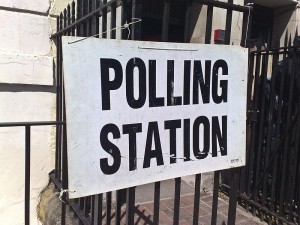Once trade unionists are asked to contract in to Labour, the current means of electing the party leader has to be abolished.

Mark Wickham-Jones, Professor of Political Science, School of Sociology, Politics and International Studies
Labour’s special conference meets in early March to discuss a series of reforms to the party’s structure, including the relationship with its affiliated trade unions. It has become clear recently that the proposals will include the end of the electoral college by which the party leader is elected. To understand why its abolition is the inescapable result of the reform process, we need to look at the measures mapped out by Labour leader Ed Miliband last summer and assess how the electoral college has developed over the last couple of decades.

Richard Jobson, Teaching Fellow in Contemporary Political History
From the very start of this review, Ed Miliband has emphasised the importance of individual trade unionists ‘contracting in’ to the political levy and to affiliated membership of the party. Since 1946 most trade unionists who have affiliated to Labour have been signed up automatically. If they objected to this decision, taken on their behalf, they needed specifically to opt out of the arrangement. Miliband’s argument was straightforward: this procedure might have made sense in the 1940s and 1950s when a large proportion of the workforce was organised in trade unions and when political identities were frequently defined by corporate memberships. Now, however, more emphasis should be placed on individual choice than on group affiliations en bloc. Moreover, such affiliated membership undermined, Miliband hinted, Labour’s development of an actively engaged party membership.
However, the introduction of opting in for affiliated trade unionists, the cornerstone of Miliband’s speech last June, has important consequences for Labour. Effectively, it renders the electoral college unworkable. As currently constituted, the college is divided into three equal components made up respectively of Members of Parliament (along with Members of the European Parliament), individual members of the party, and finally members of affiliated bodies such as trade unions. In 1993 it was reformed with the introduction of one member one vote (OMOV) in the trade union and socialist societies section. The intention was that OMOV would open up the election, potentially at any rate, to millions of the party’s affiliated members.
OMOV was first used the following year when Tony Blair was elected following the death of John Smith. Sure enough, although turnout was a disappointing 20 per cent among trade unionists, nearly 800,000 voted. Alongside the 180,000 or so individual members involved, nearly one million individuals took part. Each affiliated member’s vote was worth a fifth of that of each full member of the party.
By the time of the next contested leadership election in 2010, both the number of affiliates and of party members had fallen dramatically. 180,000 ballots went out to members: the turnout was just over 70 per cent. At the same time, 2.7 million votes were distributed to affiliates, less than one in ten of whom voted, a turnout rate of just 9 per cent. 126,874 members cast a valid ballot alongside 211,234 affiliates. Despite the fall in numbers of trade unionists voting, however, their share of the electoral college remained one third so there was a dramatic shift in the relative weighting of each affiliate’s vote. Each affiliated member’s vote was now worth three fifths of that of an individual member.
 Under the principle of contracting in an individual trade unionist will have to make a deliberate decision to affiliate to the party. Quite how many will choose to do so remains to be seen. But senior figures within the unions privately estimate that figure will be around 10 per cent of the current level. At a stroke the affiliated membership of the party will fall to around 270,000, quite possibly less than this figure. How many of these individuals will take part in a future leadership contest is also uncertain. But with party membership stalled at around 180,000 – the level it was back in 2010 – turnout amongst affiliates will have to be at least two-thirds of the participation rate of individual members if the number of unionists voting is not to fall below that of individual party members. Yet the trade unionists’ share of the electoral college would remain the same.
Under the principle of contracting in an individual trade unionist will have to make a deliberate decision to affiliate to the party. Quite how many will choose to do so remains to be seen. But senior figures within the unions privately estimate that figure will be around 10 per cent of the current level. At a stroke the affiliated membership of the party will fall to around 270,000, quite possibly less than this figure. How many of these individuals will take part in a future leadership contest is also uncertain. But with party membership stalled at around 180,000 – the level it was back in 2010 – turnout amongst affiliates will have to be at least two-thirds of the participation rate of individual members if the number of unionists voting is not to fall below that of individual party members. Yet the trade unionists’ share of the electoral college would remain the same.
Imagine a future contest in which 70 per cent of the members vote alongside a third of the affiliated members. It would mean 126,000 members voting with 90,000 affiliates. By this stage each affiliate, contributing a fraction of what the average member gives in membership dues, would have a vote worth nearly 1.4 times that of a member. (Average membership is something like £45; affiliation may be as little as £3.50.)
It might be argued that, under contracting in, affiliated trade unionists would be more likely to vote. They could, of course, hardly be less likely to take part. In the 2010 leadership contest, less than one in twenty of the Union of Shop, Distributive and Allied Workers (USDAW) members took part. But participation rates among socialist society members in 2010, all of whose members chose to take part, varied from 79 per cent to just over 10 per cent. One third of these groups had participation rates of less than 50 per cent. It is improbable that trade unions will generate higher participation rates than politically active socialist societies.
There were of course other issues with the electoral college: the existence of multiple ballots, the character of union nominations, the rules under which the contest was conducted, the manner in which ballots were distributed, and the possibility of members of other parties being sent voting forms and so on. But it is clearly anomalous to have a voting system that weighs the contributions of affiliates higher than it does that of full members. The electoral college was designed in a time of internal struggle and played an important part in defusing that conflict. But its usefulness to Labour has ended. Such a conclusion does not, of course, mean the termination of Labour’s relationship with the trade unions – far from it. Rather, it indicates that trade unions can focus on a range of issues other than the need to elect a leader every five or ten years. Put simply, once contracting in was introduced, the electoral college had to go.
